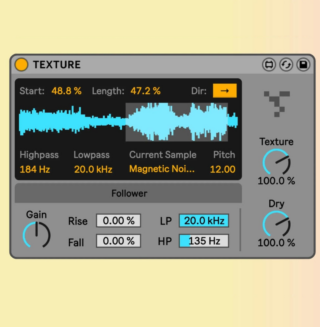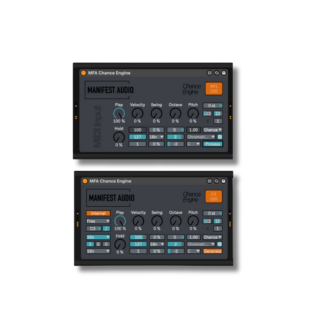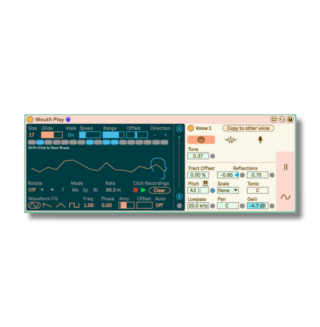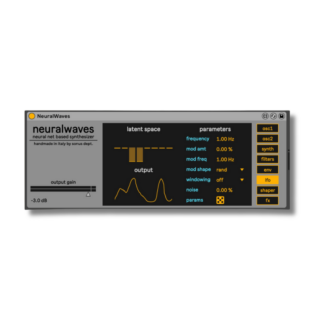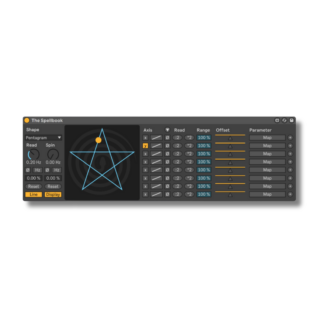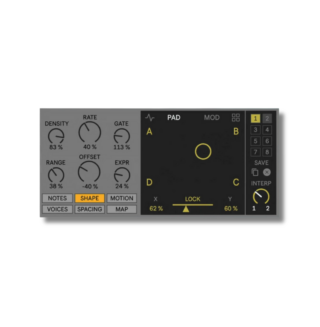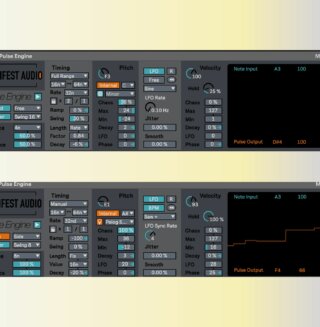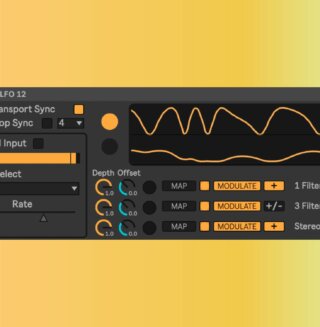AI plugins are everywhere. The DAW is next. Here are the DAWs already living in the future. But are producers ceding too much control?
You can’t doom scroll for 30 seconds these days without getting hit with an ad for some AI-powered music production software. It’s everywhere, from MIDI composition and chord suggestions to mixing and mastering plugins. We’re fully on board and happy to have the extra machine-driven help.
However, one place where AI is conspicuously absent is in your DAW. We don’t mean in plugins – there are tons of those, as we’ve said – but within the code of your actual digital audio workstation. Where is the Ableton Live version of Clippy? There are several reasons why we don’t have an AI DAW yet (many related to the sheer computing power necessary to render high-quality AI digital audio) but it’s coming. For better or worse, it’s definitely coming.
In fact, it’s already here. There are a few DAWs already out there with AI baked in. While it’s still early stages for the technology, they offer a tantalizing glimpse of what the future of music production could look like.
WavTool: The Chatbot AI DAW
WavTool is a browser-based DAW that is surprisingly full-functioned for something that lives in a website. It can handle audio files and MIDI sequencing. There’s a variety of built-in instruments and effects, with everything from a wavetable synth to compressors. It also has AI.
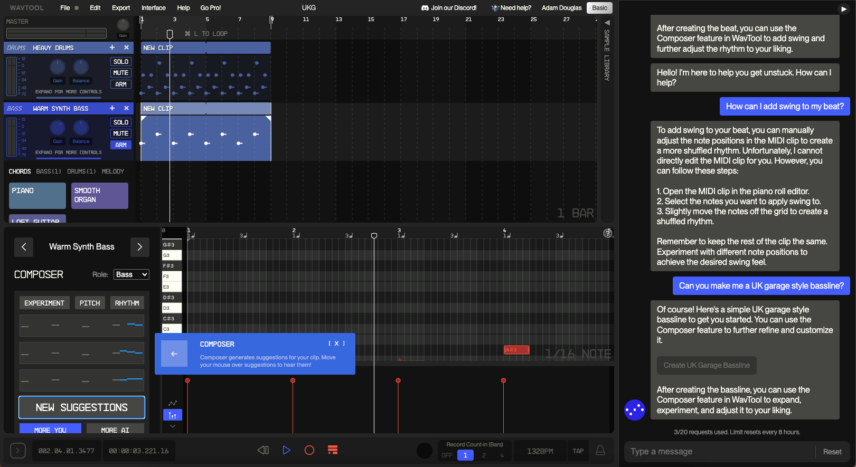
Called Conductor, WavTool’s AI assistant is a chatbot. It takes text prompts like ChatGPT or any other chatbots currently available online. You’re free to use WavTool like a regular DAW but it really gets interesting when you start engaging with Conductor. Rather than program your own beats or basslines, you can ask the AI to do it for you. It also offers compositional recommendations based on current content.
WavTool operates on a subscription model, with $20 per month getting you mp3 and wav format export plus unlimited tracks, track length and – most crucially – unlimited Conductor prompts. WavTool has made a free version available to try. However, it limits you to eight tracks per project, a track length of 384 beats and no mp3 export. The pricing page says the free version restricts you to five Conductor prompts every eight hours. However, within the DAW you get 20 for the same time period. Bonus.
Early Days For The AI DAW
WavTool shows an incredible amount of promise. It’s certainly a preview of the kind of AI DAW we’ll all be using in a few years’ time, but it’s not quite there yet. The main issue is with the AI itself. It just doesn’t know enough to be really useful in a music production context.
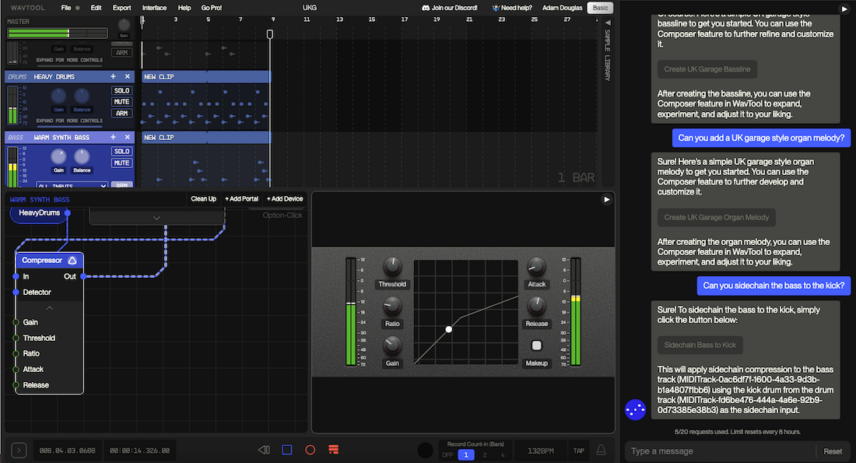
This is not WavTool’s fault. AI chatbots like ChatGPT and the one in WavTool are only as smart as the data they’ve been trained on. It makes sense. Just as you wouldn’t go to your fifth-grade teacher with a question on particle physics, you wouldn’t expect a chatbot to know about micro-genres in dance music, let alone their specific music production requirements.
Earlier this year we set out to write a feature on using ChatGPT to help make a Skrillex-style bass sound. ChatGPT confidently gave us step-by-step instructions to make something that ended up sounding nothing at all like Skrillex. When we prompted it again, it dutifully spat out another set of instructions for something entirely different but just as wrong. There’s still a lot that AI doesn’t know.
With a human-like assistant at our disposal, we’ll be able to rely on it to help take our tracks to the next level
When working with WavTool we ran into similar issues. Conductor was quick to say that it might make mistakes and that its help was just a starting point. Fair enough. But to get the results to anything usable we had to give it very specific prompts, so much so that we may as well have just programmed in the notes ourselves. For beginners, WavTool’s stated target audience, this could be very frustrating indeed.
However, we’re confident that with time WavTool’s AI will learn what it needs to know. And when it does, it will be a force to be reckoned with, becoming an educator, mixing engineer, composition assistant, mastering engineer and anything else you need it to be.
Amped Studio: Genre-Focused AI DAW
Amped Studio is another AI DAW generating interest. While it doesn’t have a chatbot, it does use AI to “create original music compositions based on input data and patterns,” according to the company’s site. It’s also very familiar with a variety of dance music genres.
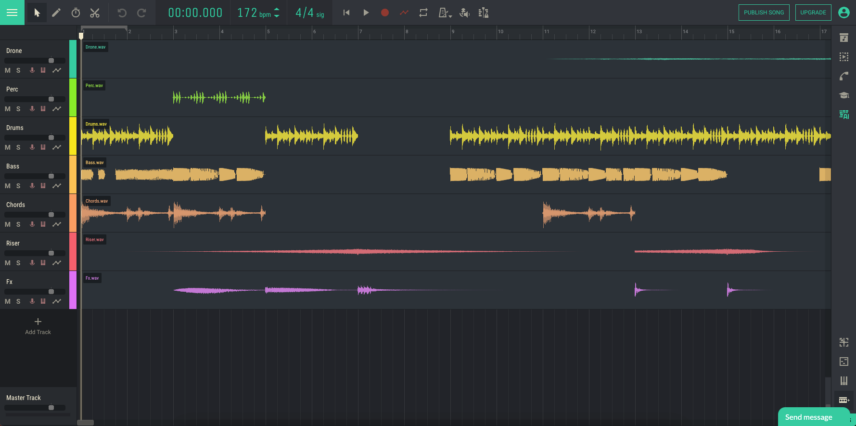
Basically, you tell it the type of music you want to make, the length of the track and the tempo and it will generate a song starter for you. You can take it as it is or customize and add to it with virtual instruments (including known ones like Dexed and Reason Studios’ Europa) and samples. It’s slick and intuitive and at $4.99 a month premium (there’s also a free version), it’s quite a bit cheaper than WavTool. There’s no chatbot though, so if you have a question, you have to speak to a real human in customer service. How old-fashioned.
Live Is Alive: The Future Of The AI DAW
While the AI DAWs above are certainly exciting, most people reading this likely won’t be interested in switching DAWs even with the promise of an AI assistant. DAWs are like extensions of our souls. We have too much invested in them to go changing. No, what we’re really waiting for is AI to come to the DAW that we already have.
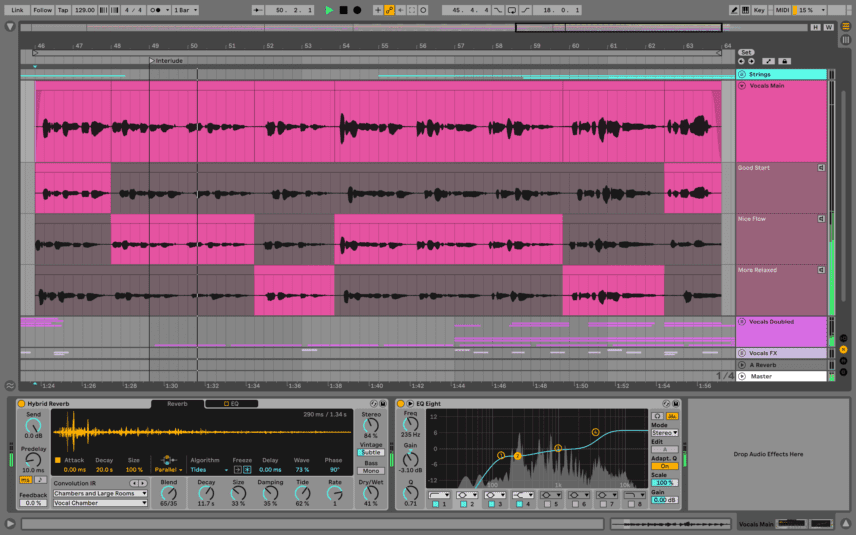
No announcements regarding major DAWs and AI have been made – and we imagine they won’t be for a while – but a few things are happening that give us hope.
Apple recently announced its own chatbot AI, Ajax. While little is known, imagining Ajax will soon appear in Apple products is not a stretch. It will likely begin as an assistant in Apple’s web browser, Safari, and then at the OS level, but it could eventually make its way into Logic Pro.
Ableton has made no such announcement but the company has already taken tentative steps towards incorporating AI into Live. Ableton made Magenta Studio, a suite of free AI-powered Max For Live devices, available as a free download in 2019. Developed by a Google-affiliated research group, the five devices allow you to generate and modify melodies and rhythms.
More excitingly, developer Ben Wager has been working on interfacing ChatGPT with Ableton Live. You can follow along with his developments on his LinkedIn page but he’s got it controlling volume and other parameters, and recently added voice prompts.
AI DAWs: What They Will Mean For Producers
Having an AI at the DAW level that you can interact with like a person is very exciting. We all have our strengths and weaknesses as producers. With a human-like assistant at our disposal, we can rely on it to help take our tracks to the next level, whether that be in sequencing, mixing, mastering, or ensuring we’re hitting a target genre correctly. Adding voice recognition to this would open things up even more.
There is a potential downside though. We could be giving up our creative agency by relying too much on AI. This applies not just to composition but also to more rote tasks like mixing. “There is a creative aspect to exactly how you compress, EQ, and so on,” wrote journalist and producer Angus Finlayson on Ableton’s blog. “If technology automates these processes, will producers miss out on opportunities to find creative new solutions to age-old problems – and to make potentially productive mistakes?”
We could be giving up our creative agency by relying too much on AI. This applies not just to composition but also to more rote tasks like mixing
However, this may not differ from how we work with ready-made sample loops and MIDI packs today. AI will be just another tool to assist in our creativity. The extent to which we rely on it will depend on the artist, the situation and other factors.
Of course, this is all dependent upon AI DAWs being trained appropriately. Who knows, maybe Ableton already has a server farm somewhere in Berlin hooked up to a steady stream of Berghain live feeds. Just be careful where you point the camera.
And lastly, where does this all leave ghost producers?
While you’re here:
Two years ago, we made an April Fools video about a plugin that will do EVERYTHING for you, including uploading your track to all the best playlists on Spotify. It was a joke, but it would appear we’re not already arrived there.

